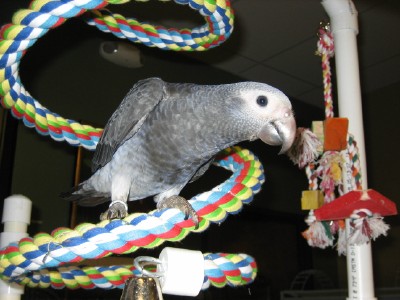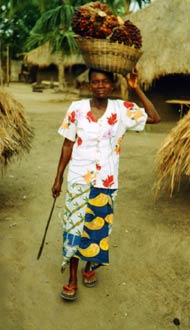NEW ADDRESS FOR MEMBERS GREYFORUMS.ORG
-
Posts
29 -
Joined
-
Last visited
jamie777's Achievements
Newbie (1/14)
10
Reputation
-
Great idea a heated perch I love it! The thought of him being cold makes me sad. I think I'll get a sleeping cage with a heated perch. It will keep his little birdy toes warm. hugs, Jamie{Love-0002011D}
-
I'm bringing Romeo home soon. he's a TAG 16 weeks old. I have a nice large cage that is in the living room. It's all ready for him. My question is... I want him to get a good nights sleep and if he stays in the living room I don't go to bed until late so he will stay up because of the TV and so on. So I want him to stay in my bedroom it's quiet and he will sleep better. The temp in the house at night gets down to 69 F. This might sound funny but what do you think about a large plastic bin with holes on the side and a perch in the middle? So he stays warm at night? When Romeo was younger they had him in a plastic bin. it sounds terrible:blink: but it wasn't. I thought he would feel more secure and stay warmer at night. Please tell me your thoughts. Hugs, Jamie
-
were can i getta proof read? Any bada know where i can getta spill checkk round here? hhhhmmmmmmm...:lol: Love ya bunches, Jamie
-
Hey I'm not copying just saw this off a thread. SSsailor wrote it. SSSailor Wrote: Cheap SAFE air Purifier? - 2007/08/10 05:54 WOAH!!! Ionizers ARE NOT BAD. Ozone generators are bad. Quick chem lesson. Ionizers create/put a negative charge on a molecule. The molecule is then attracted to other negatives (like the ground or a negatively charged plate). There is nothing exotic or harmful about this. In fact most molecules carry either a negative or positive charge. Ozone on the other hand is bad because it is a "radical" oxygen molecule. oxygen is the most reactive atom there is in normal chemistry. But ozone is an more reactive type of oxygen because it will break down and has "free electrons" these free electrons will easily "attack" other molecules and causes a change in that molecule usually bad. http://en.wikipedia.org/wiki/Ozone Hope that helps clear up your misunderstanding!
-
What video did you buy?
-
Why don't you take Mazy somewhere to get a baby trim. My TAG Romeo had a baby trim and he can fly to me from a perch and land well. He is very confident. I thinks it's good for him. He can fly and exercise without getting hurt or getting to much height. -Jamie
-
I read The African Grey Parrot handbook by Mattie SueAthan and Dianalee Deter and African Grey Parrots by Maggie Wright. I love this book it's great. -Jamie <br><br>Post edited by: jamie777, at: 2007/11/23 05:04
-
His toes are a really soft pink color. So cute. I called him pink toes when he was a baby. -Jamie
-
Hey, I know everyone has talked about Red Palm here. I have found a great Red Palm product that's organic. take a look at the information below. I got this information from Jungle Products Inc. Sources: Kurt Berger. Palm Oil. http://www.britanniafood.com/german/invite_02.htm?-'>http://www.britanniafood.com/german/invite_02.htm?- Kwasi Poku. 2002. Small-Scale Palm Oil Processing in Africa FAO AGRICULTURAL SERVICES BULLETIN 148 FOOD AND AGRICULTURE ORGANIZATION OF THE UNITED NATIONS RED PALM OIL SOURCE TOUR HOW OUR RED PALM OIL IS MADE We use the fruits of oil palms that grow along the streams and rivers and small scale farms throughout West Africa. We do not use any commercial plantain-grown palm fruits in our oil production. The palm fruit is carefully inspected by hand, and only the best quality fruits are selected. The fruits are separated, washed, then gently steamed for a few minutes to soften the pulp. They are then poured into a large mortar or frapper and pounded until the flesh separates from the nut. The nut is set aside to dry and is used to produce virgin palm kernel oil. By the time the flesh has separated from the palm nut, oil has already begun to appear. The entire mass of oil and fiber is scooped into a hand-operated screw press, which presses the oil out of the fiber mass. The red oil is heated slightly* to remove all the remaining water, then let sit for 24 hours for all the impurities to descend down to the bottom of the tank. After the 24 hours the red oil is filtered through the traditional gravity filtering system to further remove any impurities. Note that the filter is of 100 microns, therefore this process does not refine the pure red oil. The end result is a natural, handcrafted red palm oil that is the best tasting and most authentic product available. * Temperature do not exceed 105º Fahrenheit THE IMPORTANCE OF THIS PROCESS Red palm oil is one of West Africa's most important oils. It is a popular cooking oil and a main ingredient in many of our delicious sauces. Due to its very high vitamin A content, it is an essential part of the West African diet. Red palm oil is also used in health and beauty care. Local herbal doctors believe that red palm oil has strong anti-microbial properties. It is also used as a to counter the effect of poisons and as a laxative. Red palm oil is also widely used on the skin as a moisturizer and healing agent. It is also an excellent base for smooth, gentle soaps. Throughout West Africa, red palm oil is known as the "best friend of all duties" and is deeply embedded in all aspects of society. It is an important part of traditional religions. For instance, the Sakpana from Kaboli cover their entire bodies with red palm oil during their ceremonies. THE IMPORTANCE OF NATIVE VARIETIES There are two native varieties of oil palm in West Africa, Dura and Pisifera. Dura is the main variety found in natural groves, and has been the source of palm oil for decades - well before modern methods of oil palm cultivation were introduced to Africa in the second quarter of the 20th century. Plant breeders created the hybrid variety Tenera by crossing the Dura and Pisifera. The Dura has a large nut with a thick shell and thin mesocarp. The Pisifera is a small fruit with no shell. The Tenera fruit has a thick mesocarp containing much more oil and fat (chemically saturated oil) than either of its parents. The Tenera nut is small and is easily shelled to release the palm kernel. The Tenera palm kernel is smaller than the Dura kernel although the Tenera bunch is much larger than Dura. The Tenera is considered a better variety for commercial industrial purposes because of high yields, but it produces inferior oil for food consumption. African consumers have found that the palm oil produced from Tenera was too fatty. In addition, the oil did not have the right taste as oil or as a soup base. While individual West African farmers have not adopted the Tenera hybrid on a large scale, development agencies such as the FAO, World Bank, IMF, etc… have been pressuring governments and farmers to adopt Tenera for decades. Large government and corporate plantations in Togo and other West African nations do use Tenera, but this oil is highly refined and is produced for the export market. Any palm oil produced outside West Africa is from the hybrid varieties. Our palm oil comes from native Dura palms, which are grown naturally on hundreds of small farms. THE HISTORY OF PALM OIL The oil palm, Elaeis guineensis, is native to equatorial West Africa. The main oil palm belt of West Africa runs through the southern latitudes of Sierra Leone, Liberia, Ivory Coast, Ghana, Togo, Benin, Nigeria, Cameroon and into Zaire and Angola. Humans have consumed palm oil for tens of thousands of years. Written records of palm oil are available from Portuguese travelers to West Africa in the 15th century. However, fatty residues with analytical characteristics of oxidized palm oil dating back to 5000 BC have been found in Egyptian pyramids. Exports of palm oil to Europe in large quantities began in the late 18th century. After the anti-slavery legislation in the first part of the 19th century, traders needed an alternative to the lucrative slavery trade from West Africa to North & South America and the Caribbean, and trade in palm oil increased tremendously. The establishment of trade in palm oil from West Africa was mainly the result of the Industrial Revolution in Europe. As people in Europe began to take sanitation and hygiene seriously, demand for soap increased, resulting in the demand for vegetable oil suitable for soap manufacture and other technical uses, such as tinplating. In the early 1870s, exports of palm oil from the Niger Delta were 25,000 to 30,000 tons per year and by 1911 the British West African territories exported 87,000 tons. Africa led the world in production and export of palm oil throughout the first half of the 20th century, lead by Nigeria and Zaire. By 1966, however, Malaysia and Indonesia had surpassed Africa's total palm oil production. The oil palm was introduced into South Asia in 1848 as an ornamental tree. Commercial exploitation as an export crop started in Sumatra after 1910 and in Malaysia in the 1920s. Palm oil developments in South East Asia continued, and today, South East Asia exports far more palm oil than Africa, with Malaysia producing over 50% of the world's total refined palm oil exports. Sources: Kurt Berger. Palm Oil. http://www.britanniafood.com/german/invite_02.htm?- Kwasi Poku. 2002. Small-Scale Palm Oil Processing in Africa FAO AGRICULTURAL SERVICES BULLETIN 148 FOOD AND AGRICULTURE ORGANIZATION OF THE UNITED NATIONS A woman carries freshly harvested Dura palm fruit. OUR COCONUT OIL SOURCE We are extremely proud to work with Kokonut Pacific to source our Certified Organic Extra Virgin Coconut Oil. Since 1992, Kokonut Pacific has been working to develop a process called Direct Micro Expelling (DME) which allows pure virgin oil to be produced within one hour of opening the coconut. This is significant as there is no other source that can guarantee this purity and freshness in their oil. In addition, Kokonut Pacific truly works to empower the communities they represent. In their own words: “The Company’s goal is encapsulated in the motto: “Empowering and bringing hope”. Kokonut Pacific works to improve the well-being of the rural population of tropical countries through the production of premium grade coconut oil and other coconut products.” We encourage you to read more about Kokonut Pacific and the important work they are doing in the South Pacific at: http://www.kokonutpacific.com <br><br>Post edited by: jamie777, at: 2007/11/22 03:25
-
Great thank you very much. I will do that. that's very easy advice. -Jamie
-
Thank You. This is very helpful. -Jamie
-
Thank you, Thank you, Thank you... -Jamie
-
Questions Re: Sleeping1. 1What do you all think about sleeping cages? 2.What do you all think about sleeping huts only to be put in the sleeping cage? 3.What is the most comfortable things to put in sleeping cages? 4.Is their a special perch I should use? 5.Should I cover the cage at night? 6.What time should I put my AG to bed? 7.What time do they wake up? Thanks<br><br>Post edited by: jamie777, at: 2007/11/20 21:04
-
What's the best way to wash produce. Can I use apple cider vinager? Thanks, Jamie
-
start by putting the towel on your lap. Get the bird use to it. If he likes to sit in your lap have him sit on the towel. Slowly place the towel over his back and kind of snuggle with him. Work at being able to cover him up and talk sweetly to him. Play peek a boo. Then start to wrap him. Over time he will love being loved on. If he likes his cheeks scratched scratch his cheeks, rub his head and talk sweetly to him. My TAG likes the towel from doing this with him. i can get him to lay still when i rub his cheeks and softly around his eye. Hope it helps. -Jamie




